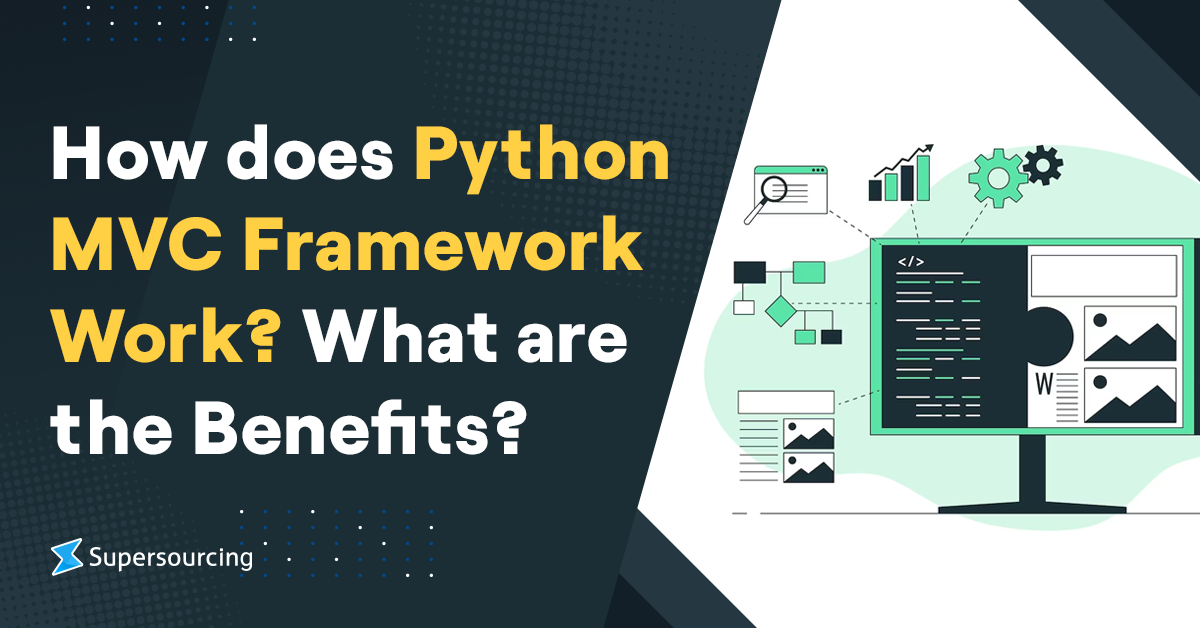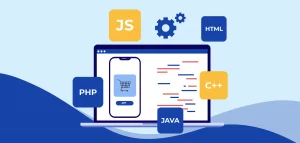Table of content
In recent years, the evolution of websites has been remarkable, from simple HTML pages to intricate applications involving thousands of developers working together. To cope with these complex web applications, developers employ various design patterns that assist in laying out their projects and making the code less intricate and more manageable. One of the most prevalent and widely used patterns, especially in Python, is the Python MVC framework based on the Model-View-Controller (MVC) pattern.
The Model-View-Controller framework is a design pattern that separates an application into three fundamental components – Model, View, and Controller. Each component manages specific development aspects of an application, and it isolates the business logic and presentation layer from each other. Initially, it enabled desktop graphical user interfaces (GUIs). However, nowadays, it is one of the most popular industry-standard web development frameworks, which helps create scalable and extensible projects. Additionally, it also enables mobile application design.
Trygve Reenskaug created MVC with the main aim of resolving the problem of users managing large and complicated data sets by dividing a large application into distinct sections, each serving a specific purpose. By doing so, it aids developers in maintaining their codebase and simplifying future developments.
Python MVC Framework: Components of the MVC Architecture
The MVC (Model-View-Controller) design pattern is used to create scalable and maintainable web applications. This pattern divides an application into three main logical components: Model, View, and Controller. Each component plays a specific role in handling various aspects of the application’s development.
Controller
The controller is responsible for receiving incoming requests and processing them to manipulate data using the model component. It acts as an intermediary between the view and model components. The controller is designed to handle all the business logic and interact with the view component to render the final output. It does not have to worry about data logic and just tells the model what to do.
Views
The view component is responsible for generating the user interface of the application. It takes data from the model component, but only through the controller. The view is created by the data collected by the model component. It only interacts with the controller and does not have access to the model component.
Model
All the logic related to data that the user interacts with corresponds to the model component. It can add or retrieve data from the database and represents the data that is being transferred between the view and controller components. The model component responds to the controller’s request because the controller cannot interact with the database by itself. The model communicates with the database and provides the necessary data to the controller.
Therefore, the MVC design pattern divides an application into three components, each with a specific role in handling the development of the application. The controller acts as an intermediary between the view and model components, while the view generates the user interface and the model represents the data-related logic. This design pattern helps create maintainable and scalable web applications.
Benefits of the Python MVC Framework
Large web applications can be organized effectively with the MVC pattern as it separates code into three components.
- The MVC pattern makes it easy to locate specific code sections and add new functionality to large-scale apps. This provides a blueprint for developers during the design phase and reduces code duplication, making application maintenance simpler.
- MVC architecture allows for easy modification, making it possible to add and update new views without affecting the overall application architecture.
- Developing multiple view components for a model component is also easy with an MVC framework, allowing separation of data and business logic and reducing code duplication.
- Web application development is faster when using the MVC architecture as developers can work on different sections simultaneously.
- As the MVC pattern supports Asynchronous Method Invocation (AMI), web applications created with it load faster and can function with PDF files, site-specific browsers, and desktop widgets.
- An MVC framework returns data without formatting, giving developers the freedom to use any technology to represent the data.
- The testing process is simplified as the MVC pattern supports test-driven development (TDD). It logically specifies multiple layers in the program, making it easier to debug large-scale systems.
- Finally, the MVC architecture is SEO-friendly, supporting the development of SEO-friendly web applications and web pages.
How Does the MVC Architecture Make Python More Efficient?
Django is a Python-based web framework that adheres to the Model-View-Controller (MVC) pattern. However, instead of implementing the pattern in the traditional way, Django modifies it to create its own unique architecture known as the Model-View-Template (MVT) approach.
Under this approach, the Model component serves as the entity that represents data from the database, which can be associated with Model objects. On the other hand, Templates consist of standard HTML, CSS, and JavaScript files, but with the addition of Django Template Language (DTL) for rendering dynamic data on the page. Model objects are the primary source of this dynamic data.
The Django workflow starts with the user requesting data, which then goes to the Django framework. When creating a project in Django, a specific file called URL is generated, which is responsible for mapping the request to the appropriate View. Here, the business logic execution takes place, even though a View is typically associated with page representation. Instead, in Django, it serves as the layer where business logic occurs, bridging the gap between the Model object and the Template.
Hence, the View determines the data which it should send to the Template. It also facilitates the connection with the Model object. This is where the significance of MVT becomes apparent. It separates the sections into Model (for data), View (for logic), and Template (for layouts). This may appear complicated at the first instance. The key difference from MVC is that the View represents the business logic, while the Controller is not necessary since it is the Django framework already includes it.
Other frameworks may require configuring the Controller. But Django handles this process automatically, eliminating the need for the developer to do so. In summary, Django’s MVT architecture is a unique and efficient approach. It simplifies the development of web applications by separating the data, logic, and layout layers.
Conclusion
With the MVC pattern, developers can effectively separate an application’s code into three components. This allows clear communication and division of labor. Each component is responsible for a specific task. So, it is easier to locate certain code sections and add new functionality quickly. In addition, the MVC pattern makes application maintenance simpler. It reduces code duplication and facilitating the addition of new views without affecting the overall architecture.
Thanks to the simplicity of the MVC framework, developers can work on different sections of a web application simultaneously. Therefore, development becomes much faster. The MVC pattern also supports test-driven development (TDD). It enables the creation of SEO-friendly web applications and web pages, increasing their visibility on search engines.
Overall, the MVC pattern is an excellent choice for software developers looking to create highly efficient and cost-effective applications.







